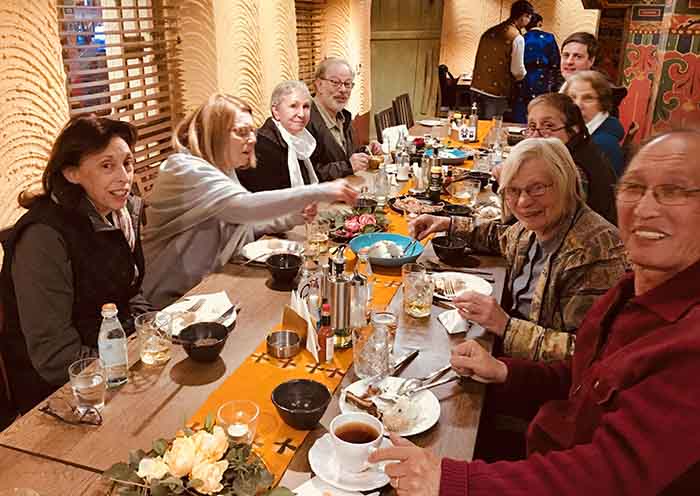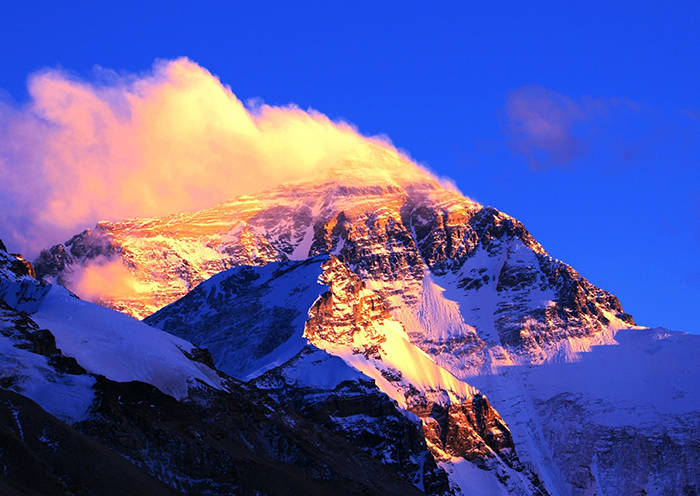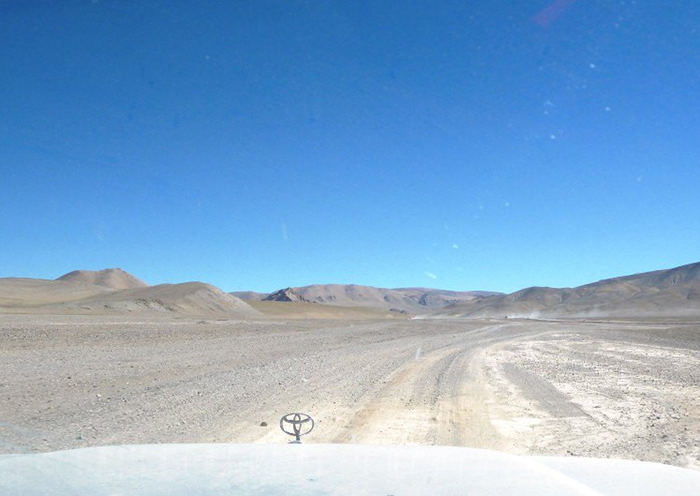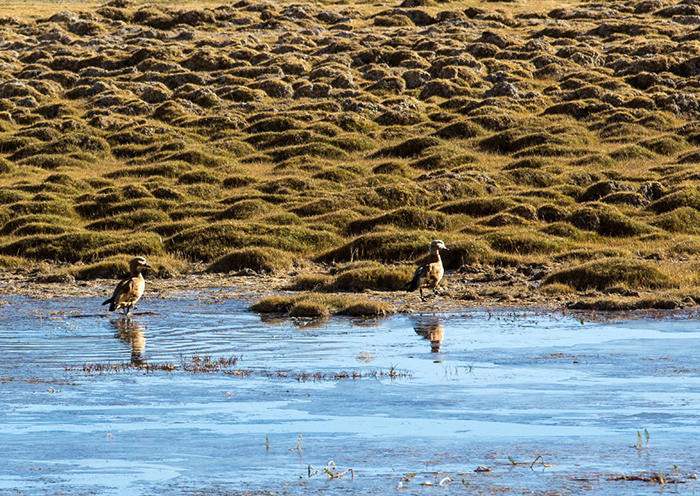Welcome to Lhasa, the capital city of the Tibetan Autonomous Region of China and referred to as "The Roof of the World." Lhasa lies in a valley deep in the Himalayan Mountains and has an altitude of 3,650 meters (11, 975 feet). Lhasa is one of the lowest regions in Tibet.
People in Lhasa enjoy bright sunshine more than 125 days a year. That might be the reason why they are so efficient in building amazing palaces and monasteries! Today is not for sightseeing; your tour guide and driver will pick you up and help you get acclimated to Lhasa’s altitude.
Tips for Acclimatization:
Generally speaking, the best way to acclimate to high-altitude areas is by having periods of rest and relaxation, staying hydrated by drinking a lot of water; and do not drink any alcohol. Please do not move around too fast, although you might be excited to be standing on “The Roof of the World,” slow down, you will have plenty of time to see and experience all the sights.
Accommodation:Four Points by Sheraton Lhasa or Himalaya Lhasa Hotel
Today, you will visit the sacred Potala Palace, which was built during the Chinese Tang Dynasty in the 7th century AD and listed as a World Cultural Heritage by the UNESCO Organization in 1994. The buildings, artworks, and statues of Tibetan Buddhism are all highlights of this ancient architectural complex. Standing on the mountain where the Potala Palace is located, you will have a bird’s eye view of the city of Lhasa. Of added interest, check out the back of a Chinese Currency 50 Yuan note, and you will see a picture of the Potala Palace printed there!
Continuing on your trip to the Jokhang Temple, also known as the Qoikang Monastery, you will find the life-size statue of the 12-year-old Shakyamuni (Buddha). Jokhang Temple is believed to be the sacred heart of Tibet, because the Shakyamuni Buddha is located in the there. That historical fact makes the Jokhang Temple even more scared than the Potala Palace. It is said the city of Lhasa was built based on the Jokhang Temple. After leaving the Temple, we will take a stroll along Barkhor Street. This ancient street is the route for pilgrimages around the Jokhang Temple and a perfect place to buy local Tibetan style handcrafts including shoes, hats, tea, bowls and quilts. If you are hungry, stop at one of the many small food stands and buy a mouth-watering Tibetan Style dessert, such as "Tu", a sort of pastry made with yak butter, brown sugar and water. If you want something more substantial, try a tasty bowl of "Thenthuk", a hand-tossed Tibetan noodle soup, a local favorite.
Did you know Shakyamuni lived around 500 BC and was the founder of Buddhism?
Accommodation:Four Points by Sheraton Lhasa or Himalaya Lhasa Hotel
This day will give you the opportunity to fully immerse yourself in Tibetan culture as you will be involved in the hands-on process of the traditional Tibetan handicrafts; then witness a truly Tibetan tradition with the debating monks at one of Tibetan Buddhhim's holiest monasteries - the Sera Monastery. After breakfast, in the ethereal morning rays of light of a Lhasa morning, we will learn how to make traditional Tibetan cuisine in a typical Tibetan setting. Dishes will include Kasei (fried dough foods), Tsampa (roasted barley) with butter and cheese, Tibetan butter tea, and other tasty Tibetan treats. After learning the essence of Tibetan cooking, we will move on to Tibetan Traditional Handicraft Art Center by bus. This treasure house of Tibetan culture will teach you all about various Tibetan costumes as you learn how to make Tibetan incense, the methods behind Tibetan calligraphy, how to create thangka (Tibetan Buddhist painting), and the secrets of block printing.
Having mastered the art of Tibetan handicrafts, we will move on to visit the holy Sera Monastery to see the Buddhist scripture debate, which is held in the courtyard almost every day between 3 and 5:30 p.m. Please note that in case of some special monastery activities such as the Dharma Meeting or the reception of VIPs, the monk debates may be canceled that day. After our visit to the monastery, feel free to stroll around the streets of Lhasa as you absorb the atmosphere and spirit of the devoted Tibetan people or you may return to your hotel to rest and relax from this wonderful Tibetan cultural experience.
Accommodation:Four Points by Sheraton Lhasa or Himalaya Lhasa Hotel
Today, we will leave Lhasa for Shigatse, the home of 5 mountains whose heights are over 8,000 meters (26,246 feet). On the way, we will see the charming Lake Yamdrok first. With an altitude of 4,441 meters (1,446 feet), the Lake Yamdrok is the highest fresh-water lake in the world. The color of the lake is sky blue due to the reflection of the blue sky. Sometimes it turns to deep blue when the angle of sunshine changes. The water of the lake comes from the snow on the Nyenchen Tanglha Mountain, so local people believe the water can purify their souls.
We will head towards the Karola Glacier after visiting the lake. The altitude will go up to 5,560 meters (18,241 feet) on the way to the glacier, which is only 300 meters (1,082 feet) away from the highway. The glacier looks like a huge Tangka (Tibetan Scroll Painting) under the sunshine. It was used in scenes in many Chinese movies, such as the Red River Valley and The Knot.
Visit the Kumbum Monastery before you spend the night in Shigatse. The 9-story One Hundred Thousand Buddhist Pagoda is a must-visit attraction in the monastery. Over 100,000 sculptures of Buddhas and 1,000 frescos collected in the monastery make it a paradise for art.
Did You Know the Yamdrok, Namtso and Manasarovar are three sacred lakes in Tibet?
Accommodation:Shigatse Gesar Hotel or similar
We will drive to unlock the mighty Mount Everest today. You will reach the Rongphu Monastery to get the best view of the Mount Everest first. And Next, you will move to the Everest Base Camp (EBC) to admire the world’s highest mountain from an even closer distance. You will spend the night in the guesthouse of Rongphu Monastery or a tent at the EBC. Please take a good rest and be ready for the fantastic sunrise over Mount Everest the following morning.
Accommodation:EBC Tent or Rongphu Guest House (Dorm bed with humble facility)
The most important activity today is wishing a beautiful sunrise. During a clear day, the Mount Everest looks like a goddess wearing a golden veil. You can try your best to see her face, but you can never see every part of her face clearly. This is one or the many reason why she is sacred!
Although you are about to leave Mount Everest after seeing the dazzling sunrise, you can still admire 4 mountains whose altitudes are over 8,000 meters (26,246 feet). These 4 giants are the Cho Oyu (8,201 meters or 26,906 feet), Lhotse (8,516 meters or 27,939 feet), Makalu (8,485 meters or 27,837 feet) and Shishapangma (8,012 meters, 26,286 feet).
You will pass by the Lake Pekhutso on your way to Saga Town, where you will stay overnight . The lake offers you the best angle to admire the Mountain Shishapangma, the only over-8,000-meter-high mountain completely located entirely within Tibet. Besides the mountain, the fishin the lake and the wild horses, donkeys and Tibetan antelopes will also catch your eye.
Accommodation:Saga Hotel or Similar (Twin Sharing)
Today is for transportation. You will be transported from Saga to Darchen to prepare for the Mount Kailash Trek. During the trip, you will see endless grassland and wild animals . En-Route, you will stop for a rest at the old Drongpa Town. The monastery there is also worth a visit.
Continuing the drive after your break in Drongpa, you will reach the Lake Manasarovar. As one of the 3 sacred lakes in Tibet, the Manasarovar is a must-visit attraction before you start a Mount Kailash Trek, because praying beside the lake will make you have good luck during one of the toughest treks in the world. Darchen is today’s last stop and the place for you to stay for the night.
Accommodation:Darchen Chongqing hotel or similar
Mount Kailash is considered to be the center of the world by many religions, such as Tibetan Buddhism, Hinduism and Bonismo. Kailash means the "Mountain of the Immortals" in Tibetan language. Finishing a Kailash Kora Trek shows people’s respect to the immortals.
Today you will start the first section of the 52-kilometer-long (32 miles) Mount Kailash Trek. Darchen is the start point. If you don’t want to carry your heavy luggage, some local porters and their yaks and horses are ready to help you (at your own expense). But you have to hike for several hours before meeting the porters. There are also local people who are selling beverages and food along the trek route. The night will be spent in the guesthouse of the Dirapuk Monastery.
Accommodation:Local Guest House (Dorm Bed with humble facility)
Both today’s scenery and trek route will drive you crazy. The length for today’s trek is 24 kilometers, so you have to start before the sunrise. You will reach a celestial funeral platform after 4 kilometers’ (2.5 miles) hiking. In Tibetan people’s minds, a celestial funeral is an honorable ceremony. After another 4 kilometers, the Dolma-La Pass will be right in front of you. Take a rest and admire the unique scenery around you - you will find all your effort so far is worthwhile. You will have a rest at a supply point before finishing today’s trek at the Dzultripuk Monastery, which means "Miraculous Cave of the Milarepa".
Did you know?
The Tibetan people usually do one form of worship by lying prone on the ground for every 3 steps they walk during a Mount Kailash Kora. They believe if they don’t do it, the Buddha will not bless them. When you are about to give up, just look to them for encouragement.
Accommodation:Local Guest House (Dorm Bed with humble facility)
Today we will complete our trek around Mt. Kailash, beginning by visiting the many caves, temples and shrines that have been built upon around Milarepa’s cave. It is an easy walk back towards Darchen, taking only about 3 hours of trekking to reach the end of the valley where our driver will meet us to take us for a drive to Tsada.
Accommodation:Tsada dianxin hotel or similar
Around 1 million years ago, the Tsada area was occupied by a huge lake, which covered an area of 500 square kilometers (123,552 acres). With the rise of the Himalaya Mountain Range, the lake plate also roseand finally the lake dried up. The Clay Forest formed gradually due to wind erosion. Nowadays, the countless peaks of the Clay Forest located on the banks of the Elephant Spring River look like strong body guards for the beautiful river.
Built in the 10th century AD and reaching its heyday around 15th century, the ancient Guge Kingdom disappeared almost overnight in the 17th century. Around 1985, geologists discovered the ruins of the ancient kingdom. Around 600 houses, towers, pagodas, storehouses, tombs and countless frescos and sculptures have been unearthed for exhibition.
Accommodation:Tsada dianxin hotel or similar
Today we will drive through the windswept territory of rural Tibet, passing through numerous small villages as well as camps of yak and sheepherders on our way back to Saga. With all of the beautiful scenery surrounding us, we will have plenty of opportunities to stop and take photos if you like.
Accommodation:Saga Hotel or similar
More spectacular scenery awaits us as we continue on our leisurely drive back to Shigatse where we will spend the night.
Accommodation:Shigatse Gesar Hotel or similar
We will get an early start today to visit the Tashilunpo Monastery, which was founded in 1447 by the 1st Dalai Lama. After visiting this ancient monastery, one of the most important sites in Tibetan Buddhism, then we will head back to Lhasa.
Accommodation:Four Points by Sheraton Lhasa or Himalaya Lhasa Hotel
Your day will be free until we pick you up to take you on the 30-minute drive to the Lhasa airport for your departing flight.
Accommodation:None




















































 Data in submission...
Data in submission...